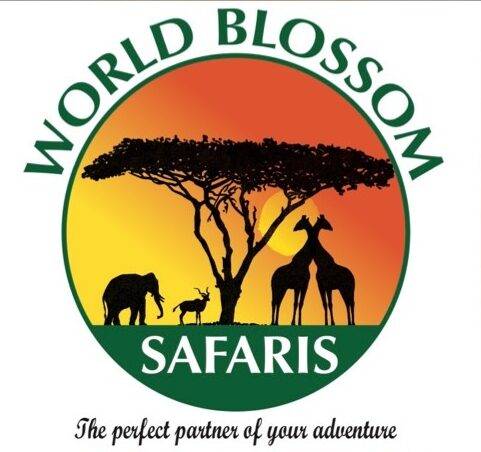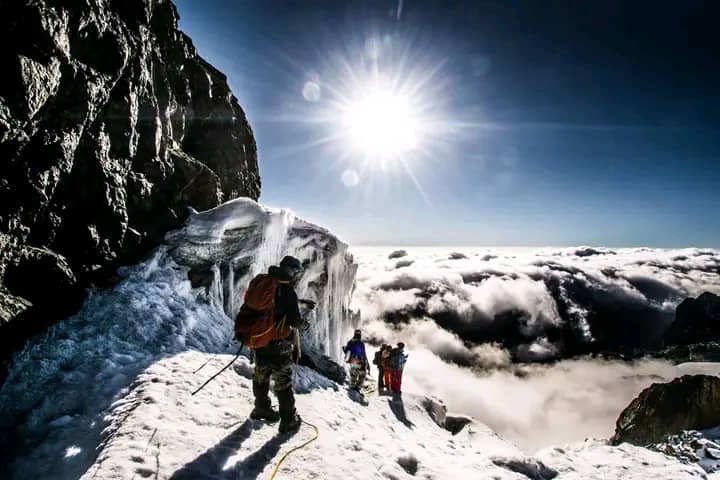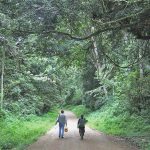Rwenzori Mountains National Park: A Complete Guide
Facts About Rwenzori Mountains
The Rwenzori Mountains national park often referred to as the “Mountains of the Moon,” are located in western Uganda, straddling the border with the Democratic Republic of Congo (DRC).
The range stretches for about 120 kilometers and includes Africa’s third-highest peak, Margherita Peak, at 5,109 meters.
Unique from other African peaks like Mount Kilimanjaro, the Rwenzoris are not volcanic. They formed due to tectonic uplift during the Miocene epoch.
Known for its exceptional biodiversity, the mountain range is home to species found nowhere else on Earth, contributing to its designation as a UNESCO World Heritage Site in 1994.
The Rwenzoris feature permanent glaciers and snow, despite their location near the equator. However, these glaciers are rapidly receding due to climate change.
Park at a Glance
Location: Kasese District, about 375 kilometers west of Kampala, Uganda’s capital.
Size: Encompasses an area of 996 square kilometers.
Altitude Range: From 1,670 meters to 5,109 meters above sea level.
Established: 1991 and managed by the Uganda Wildlife Authority (UWA).
Landscape Highlights: Includes glaciers, snow-capped peaks, alpine meadows, waterfalls, valleys, and dense forests.
Main Attractions: Mountaineering, rich biodiversity, birdwatching, and cultural experiences.
Rwenzori Mountains National Park is an ecological treasure trove with diverse flora and fauna:
Mammals:
Forest elephants
L’Hoest’s monkeys
Rwenzori duikers
Leopards (rarely seen)
Tree hyraxes
Birds:
The park boasts over 217 bird species, including 19 Albertine Rift endemics such as:
Rwenzori turaco
Handsome francolin
Arch’s robin-chat
Dusky crimsonwing
Unique Flora:
The park features distinct vegetation zones, including:
Montane forest: Home to dense hardwood trees.
Bamboo zone: Found between 2,500–3,000 meters.
Heather zone: Dominated by giant heather trees.
Afro-alpine zone: Features iconic giant lobelias and groundsels.
Access
By Road:
From Kampala, the journey to the park takes 6–7 hours by car. The most popular route passes through Fort Portal and Kasese towns.
Nyakalengija, the primary starting point for treks, is about 22 kilometers from Kasese.
By Air:
Scheduled or chartered flights are available to Kasese Airstrip from Entebbe or Kajjansi Airfield.
Local People
The surrounding areas of the Rwenzori Mountains are inhabited by the Bakonzo and Bamba communities. These indigenous groups have a deep spiritual and cultural connection to the mountains, often referring to them as “the home of the gods.” Visitors can immerse themselves in:
Traditional dances like the Ekihumuriro Dance.
Tasting local cuisines, such as millet bread and yams.
Learning about traditional healing practices using mountain herbs.
Climate and Weather
Tropical Base Climate: The lower slopes experience warm and humid conditions.
Cold Mountain Weather: Temperatures at higher altitudes range between -2°C and 20°C.
Rainfall: The park experiences two rainy seasons (March-May and September-November), characterized by heavy downpours.
Snow and Ice: Present year-round at altitudes above 4,000 meters.
Best Weather: The dry seasons (December-February and June-August) are ideal for trekking and climbing.
When to Visit
The best times to visit the Rwenzori Mountains are during the dry seasons:
December to February
June to August These months offer clearer skies and reduced rainfall, making trekking routes safer and more enjoyable.
How Many Days You Need to Climb to the Top
Climbing to the summit of Margherita Peak takes 7 to 9 days. This includes time for:
Acclimatization to prevent altitude sickness.
Ascending through different vegetation zones.
Enjoying the scenic beauty of the Rwenzoris.
The exact duration depends on the trekking route and your physical fitness level.
Accommodation on Each Level
The park provides accommodations suited to different elevations:
Nyakalengija (Base Camp):
Budget options include simple lodges and campsites.
Lower Slopes:
Nyabitaba Hut (2,651m): First overnight stop for most trekkers.
Mid-Elevation Camps:
John Matte Hut (3,414m): Offers stunning views of the Bujuku Valley.
Bujuku Hut (3,962m): Located near Bujuku Lake, ideal for acclimatization.
High Camps:
Elena Hut (4,540m): The final base before attempting Margherita Peak.
Luxury Options:
Available in Kasese town for visitors not climbing the mountain.
Attractions and Activities
Mountain Climbing:
Conquer Margherita Peak for the ultimate adventure.
Several routes cater to different fitness and experience levels.
Nature Walks:
Shorter treks offer access to waterfalls, valleys, and unique flora.
A paradise for bird lovers with over 217 species.
Cultural Tours
Experience Bakonzo traditions, dance, and cuisine.
Photography
Capture glaciers, peaks, unique vegetation, and breathtaking landscapes.
Wildlife Viewing:
Spot rare mammals and primates in the lower forest zones.
Tariffs and Payments
Park Entry Fees (Per Day):
Foreign Non-Residents: $35
Foreign Residents: $25
East African Citizens: UGX 15,000
Climbing Permits:
Vary between $50 and $100 depending on the chosen route.
Guides and Porters:
Hiring a guide is mandatory and costs approximately $20–50 per day. Porters charge around $15–30 daily, depending on the load.
Why Visit Rwenzori Mountains National Park?
The Rwenzori Mountains National Park is a treasure for adventurers, nature lovers, and cultural enthusiasts.
From its majestic snow-capped peaks and rare alpine vegetation to its vibrant local cultures, the park offers a truly unforgettable experience.
Whether you’re climbing to the summit or exploring its lush valleys, the Rwenzori Mountains promise a unique connection to the beauty and diversity of Uganda




